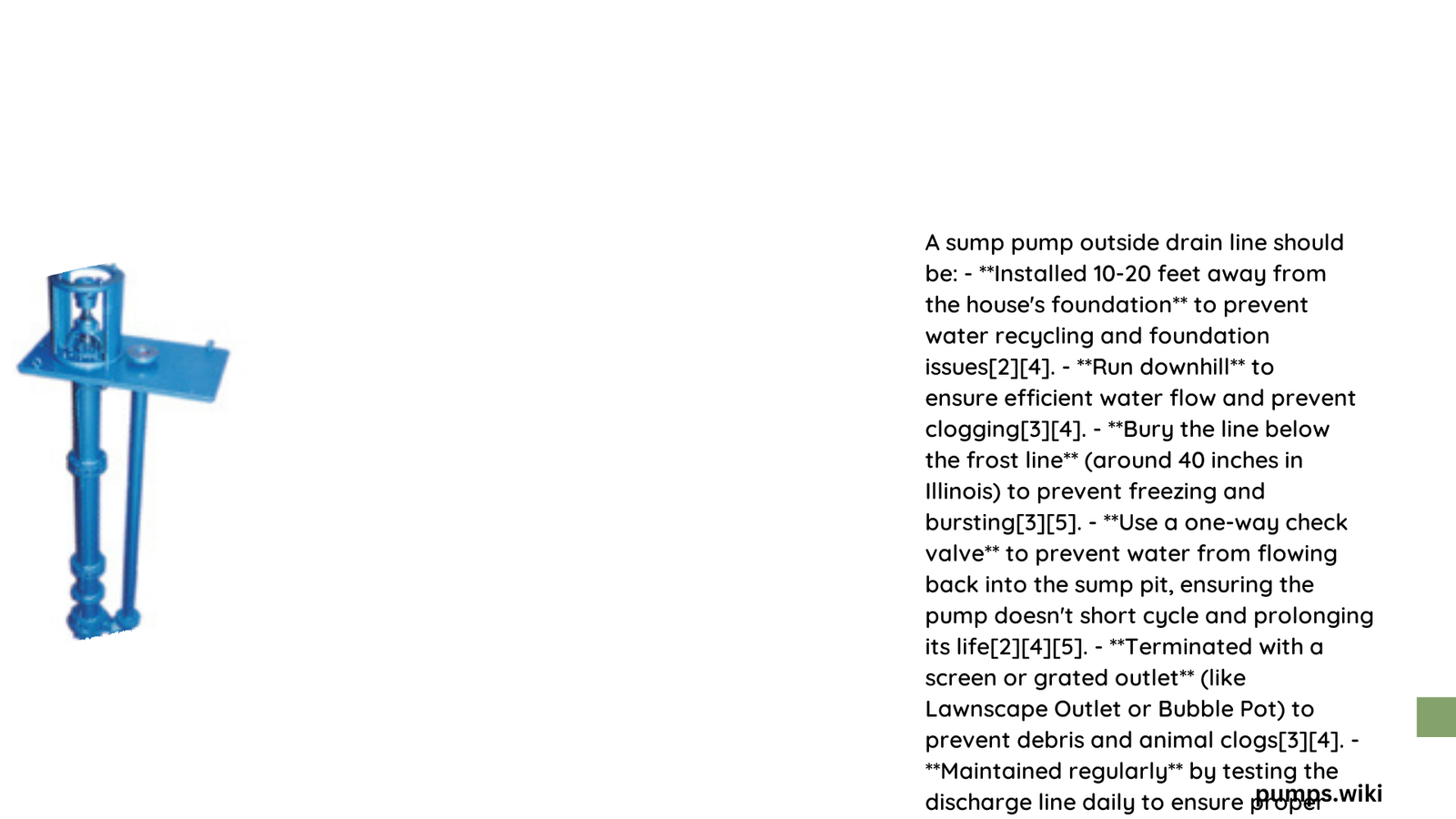A sump pump outside drain line is a critical infrastructure component that prevents water accumulation around residential foundations by efficiently redirecting excess groundwater away from your property. Proper installation and maintenance of this drainage system can protect your home from potential water damage, basement flooding, and structural issues caused by moisture infiltration.
What Are the Essential Materials for Sump Pump Outside Drain Line?
Recommended Pipe and Connection Materials
| Material | Specification | Purpose |
|---|---|---|
| PVC Pipe | 1.5-2 inches diameter | Primary discharge conduit |
| PVC Cement | High-quality waterproof | Secure pipe connections |
| Connectors | Appropriate size | Joining pipe sections |
| Pop-up Drain | Weather-resistant | Controlled water discharge |
Why Proper Material Selection Matters?
Selecting the right materials ensures:
– Durability against environmental conditions
– Optimal water flow
– Resistance to corrosion
– Long-term performance
How Deep Should the Sump Pump Outside Drain Line Be Installed?

The installation depth is crucial for preventing freezing and ensuring proper drainage. Key considerations include:
- Local Frost Line Depth
- Research your region’s specific frost line
- Typical depths range from 32-48 inches
-
Illinois example: 40 inches below ground surface
-
Drainage Slope Requirements
- Maintain a 1-2% gradient
- Ensure 1/8 to 1/4 inch drop per linear foot
- Prevents water stagnation and potential backflow
What Are the Critical Installation Steps?
Comprehensive Installation Process
- Route Planning
- Map discharge path away from foundation
- Avoid neighboring property water redirection
-
Consider landscape topography
-
Trench Preparation
- Dig to appropriate depth
- Ensure consistent slope
-
Remove rocks and debris
-
Pipe Positioning
- Use 90-degree PVC elbow
- Secure connections with waterproof cement
- Test for watertight seal
How to Maintain Your Sump Pump Outside Drain Line?
Maintenance Checklist
- Cleaning Frequency: Biannual inspection
- Blockage Prevention: Remove accumulated debris
- Freezing Protection: Insulate in cold climates
- Connection Integrity: Check for leaks quarterly
What Troubleshooting Techniques Resolve Common Issues?
Problem Detection and Resolution
- Blockage Identification
- Use plumbing snake
- Check air gap between pipe and drain tile
-
Verify minimum 1-2 inch separation
-
Flow Testing
- Simulate water discharge
- Observe drainage pattern
- Confirm water moves away from structure
What Are Potential Risks of Improper Installation?
Risks include:
– Basement flooding
– Foundation water damage
– Soil erosion
– Potential structural compromise
Expert Recommendations
- Always consult local building codes
- Consider professional installation for complex landscapes
- Invest in high-quality materials
- Perform regular maintenance
Conclusion
A well-designed sump pump outside drain line protects your home’s foundation and prevents water-related damage. Proper installation, material selection, and consistent maintenance are key to long-term effectiveness.
